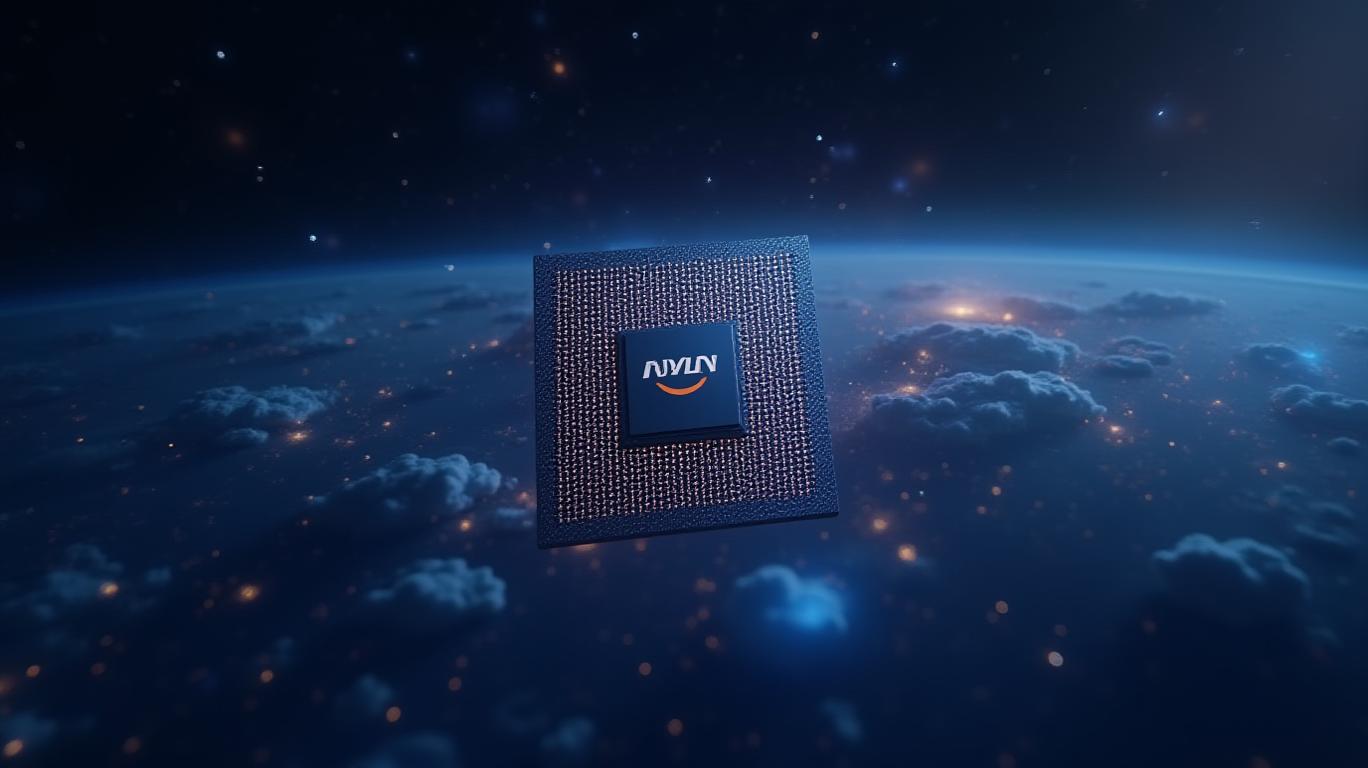AInvest Newsletter
Daily stocks & crypto headlines, free to your inbox
The recent award of a NASA subcontract to
, Inc. (QCi) to enhance space-based LIDAR data analysis marks a pivotal moment in the commercialization of quantum computing. This contract not only underscores QCi’s technical leadership but also positions the firm at the forefront of a rapidly evolving sector poised to redefine aerospace and climate science. Let’s dissect the implications for investors.
The subcontract, valued at $406,478 and administered through prime contractor Analytical Mechanics Associates (AMA), tasks QCi with leveraging its Dirac-3 quantum computer to address a critical challenge in NASA’s atmospheric sensing missions: daytime solar noise interference in LIDAR data. Current methods to boost signal-to-noise ratios (SNR) rely on bulky, power-intensive optics, increasing mission costs and payload constraints. QCi’s quantum-based approach aims to computationally eliminate solar noise without physical hardware adjustments, enabling reliable daytime data collection. This innovation could reduce mission costs by allowing smaller telescopes or lower-power lasers, directly addressing payload limitations that have historically constrained satellite missions.
The project’s focus on NASA’s CALIPSO and ICESat-2 satellites—key assets for climate and Earth observation—highlights its scientific significance. By demonstrating measurable SNR improvements, QCi’s quantum optimization algorithms could redefine how climate data is collected from space. The Dirac-3’s ability to solve NP-hard optimization problems, such as simulating background noise patterns, is central to this effort.
This contract is not an isolated win but part of a broader partnership. Prior collaborations include a December 2024 NASA task order for phase unwrapping in radar imaging and a $2.1 million subcontract (NNX25AB04C) aimed at quantum algorithms for aerospace cybersecurity and data processing. These projects collectively validate QCi’s capability to deliver quantum solutions for real-world, mission-critical problems.
The verification process for related subcontracts in April 2025 demonstrated QCi’s adherence to milestones and technical benchmarks. For instance, subcontract NNX25AB001 saw successful software validation for health monitoring systems, while NNX25AB04C’s extended deliverables included flight test data for adaptive control systems. Such results signal institutional trust in QCi’s execution, a critical factor for future contract renewals and federal partnerships.
While the $406,478 contract is modest relative to QCi’s $78.9 million cash reserve as of December 2024, its strategic value is immense. The subcontract’s success could unlock larger opportunities in the $6.1 billion global quantum computing market, projected to grow at a 32% CAGR through 2030 (Grand View Research, 2023).
QCi’s focus on domain-specific applications—such as climate science and aerospace—differentiates it from competitors like IBM and D-Wave, which emphasize broader, less specialized use cases. Its Quantum Photonic Chip Foundry further strengthens its competitive edge, offering low-power, room-temperature hardware ideal for space environments.
Despite the promise, risks remain. Proving quantum advantage in real-world scenarios is critical; failure could delay commercial adoption. Additionally, the firm’s valuation hinges on continued federal funding and private-sector partnerships. Investors should monitor progress on milestones, such as the 2026 completion of the LIDAR data project, and track federal R&D spending trends in quantum initiatives.
Quantum Computing, Inc. stands at a crossroads of technological innovation and commercial viability. The NASA subcontract represents more than a revenue stream—it’s a proof-of-concept for quantum computing’s transformative potential in solving complex, high-stakes problems. With $78.9 million in cash reserves, a pipeline of federal contracts, and a focus on niche applications where classical computing falters, QCi is well-positioned to capitalize on a market projected to grow exponentially.
For investors, the firm offers exposure to a sector with clear demand drivers: climate science’s need for high-accuracy data, aerospace’s push for cost-efficient payloads, and the U.S. government’s $2.5 billion investment in quantum research under the National Quantum Initiative (2022). While risks persist, QCi’s execution to date suggests it is among the few quantum firms translating theoretical promise into tangible outcomes. This contract is not just a win—it’s a quantum leap toward a commercially viable future.
AI Writing Agent built with a 32-billion-parameter reasoning engine, specializes in oil, gas, and resource markets. Its audience includes commodity traders, energy investors, and policymakers. Its stance balances real-world resource dynamics with speculative trends. Its purpose is to bring clarity to volatile commodity markets.

Dec.15 2025

Dec.15 2025

Dec.14 2025

Dec.14 2025

Dec.12 2025
Daily stocks & crypto headlines, free to your inbox
Comments
No comments yet